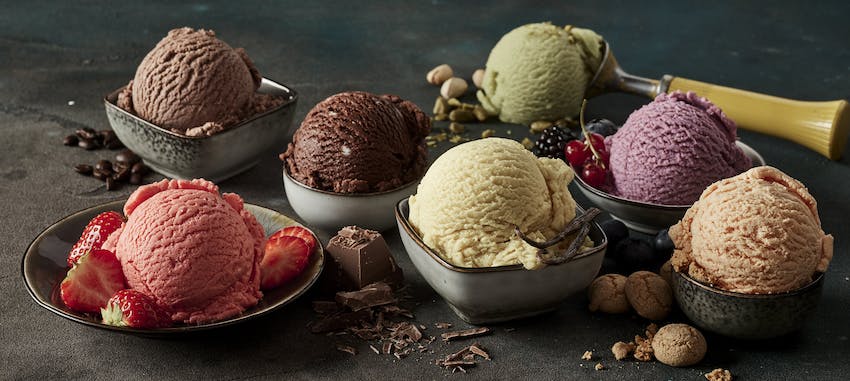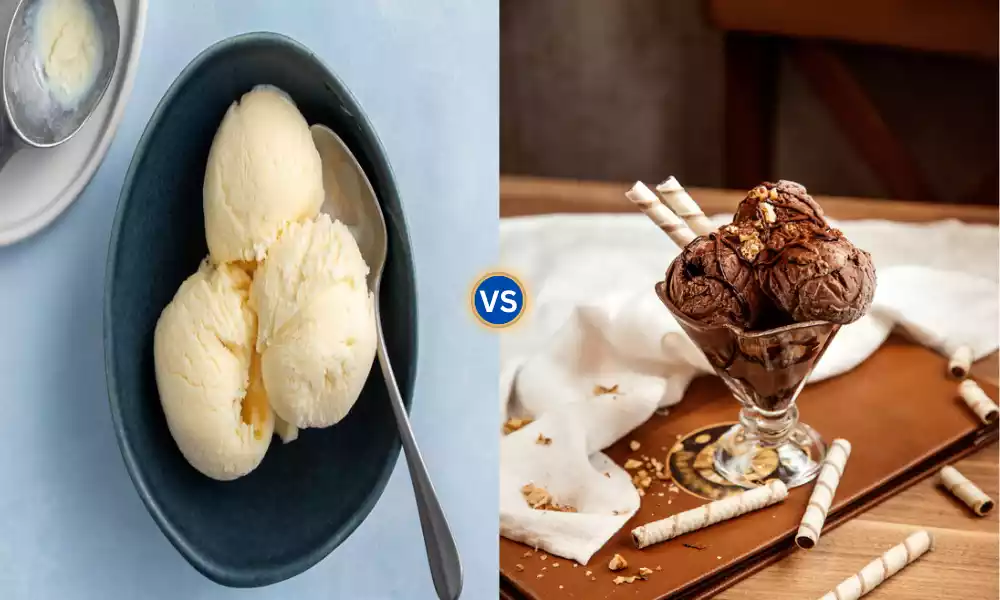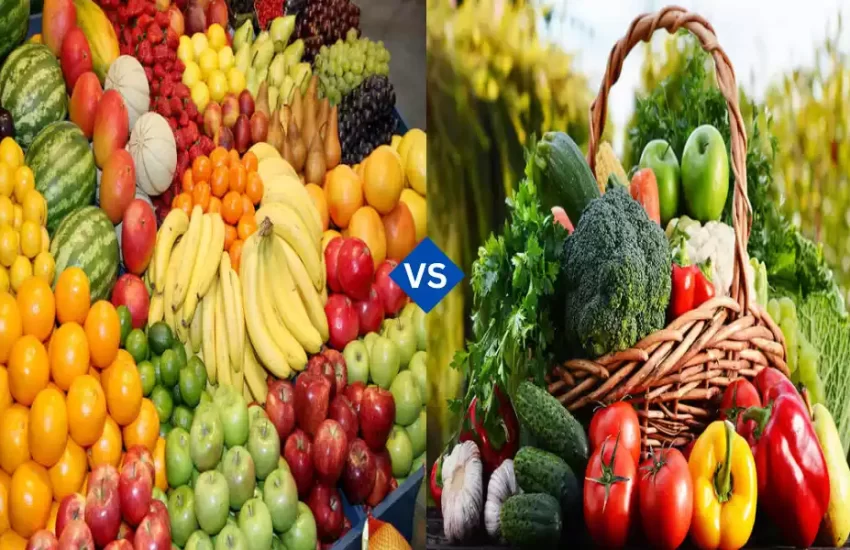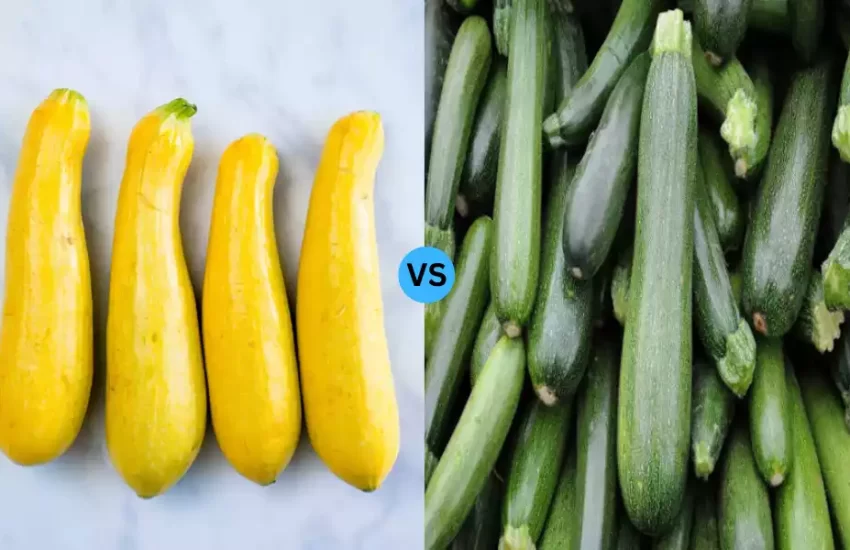Difference Between Gelato vs Ice Cream
Gelato and ice cream are both popular frozen desserts, but they differ in texture, ingredients, and preparation methods. Gelato, originating from Italy, is made with a higher proportion of whole milk to cream, resulting in a lower fat content than ice cream. It’s churned at a slower rate, incorporating less air and giving it a denser, smoother texture.
Ice cream, on the other hand, typically has a higher cream content and is churned quickly to incorporate more air, making it lighter and fluffier. Additionally, gelato is served at a slightly warmer temperature than ice cream, which enhances its creamy texture and rich flavors. Despite these differences, both gelato and ice cream offer a delightful array of flavors and remain beloved treats worldwide.
Definition of Gelato
Gelato is a traditional Italian frozen dessert that is similar to ice cream but distinct in several key aspects. It typically has a lower fat content than ice cream, as it is made with a greater proportion of whole milk to cream. This results in a denser texture because gelato is churned at a slower rate than ice cream, incorporating less air. The lower fat content and slower churning process allow for a more intense flavor profile.

Gelato is also served at a slightly warmer temperature than ice cream, contributing to its silkier and softer texture. This dessert comes in a variety of flavors, often including fresh fruits, nuts, and chocolate. The emphasis in gelato production is often on natural and high-quality ingredients, reflecting its Italian culinary heritage.
Definition of Ice Cream
Ice cream is a popular frozen dessert made primarily from dairy products like cream, milk, and sugar, often combined with flavorings and sweeteners. It is characterized by its high fat content, typically due to the use of a higher proportion of cream compared to milk. This rich cream base is churned at a relatively high speed during the freezing process, which incorporates air into the mixture, resulting in its light and fluffy texture.

In many countries, there are specific standards regarding the minimum amount of milk fat ice cream must contain, often around 10% or more. This fat content contributes significantly to the creamy texture and rich taste of ice cream.
Ice cream is usually served cold and can be found in an array of flavors, from classic vanilla, chocolate, and strawberry to more innovative and exotic varieties. It’s a versatile dessert, enjoyed on its own, as part of sundaes, with toppings, or in combination with other desserts like cake or pie. Ice cream’s widespread popularity is due in part to its delightful texture and the endless variety of flavors and ways it can be enjoyed.
Importance of knowing about their differences
Understanding the differences between gelato and ice cream is important for several reasons, particularly for consumers, culinary professionals, and those with dietary considerations:
- Consumer Preference: Knowing the differences helps consumers make informed choices based on texture, flavor intensity, and fat content. Some may prefer the richer, creamier texture of ice cream, while others might favor the dense, flavor-intense experience of gelato.
- Dietary Needs: For individuals monitoring their fat intake, knowing that gelato typically has a lower fat content than ice cream can be crucial information.
- Culinary Application: Chefs and dessert makers can choose the appropriate dessert base (gelato or ice cream) to complement other components in a dish, based on texture and flavor profile.
- Cultural Appreciation: Understanding these differences can also enhance the appreciation of the cultural and historical contexts from which these desserts originate – gelato from Italy and the broader tradition of ice cream in various forms around the world.
- Business and Marketing: For businesses in the food industry, this knowledge is key in marketing products accurately and catering to specific consumer preferences.
- Health and Nutrition: Educators and nutritionists can provide more accurate advice and education about these desserts in terms of their nutritional content.
- Culinary Innovation: Knowing the fundamentals of each can inspire culinary innovation and experimentation in creating new flavors or hybrid desserts.
- Allergen Information: Different preparation methods and ingredients may affect those with allergies (e.g., egg allergies in the case of some ice creams).
- Portion Control: Awareness of the differences can guide portion control, especially in a diet or when managing caloric intake, as the density and serving size can vary.
Understanding the differences between gelato and ice cream is not just about choosing a dessert; it’s about making informed decisions that align with personal preferences, dietary needs, and culinary goals.
Difference between Gelato vs Ice Cream
Gelato and ice cream are similar frozen desserts, but they have several key differences in ingredients, texture, and preparation methods:
- Ingredients and Fat Content:
- Gelato: Typically made with a higher proportion of whole milk compared to cream, resulting in a lower fat content (usually around 4-8%).
- Ice Cream: Generally contains more cream than milk and often includes egg yolks. This leads to a higher fat content (usually above 10%).
- Texture and Density:
- Gelato: Churned at a slower rate, which incorporates less air into the mixture. This results in a denser, smoother, and silkier texture.
- Ice Cream: Churned faster, introducing more air (known as overrun). This makes ice cream lighter and fluffier.
- Serving Temperature:
- Gelato: Served at a slightly warmer temperature than ice cream, which enhances its creamy texture and allows for a more robust flavor.
- Ice Cream: Served colder, which can sometimes mask the flavor but contributes to the firm texture.
- Flavor Intensity:
- Gelato: Due to the lower fat content and warmer serving temperature, gelato often has a more intense flavor profile.
- Ice Cream: The higher fat content can sometimes coat the palate, subtly muting the intensity of flavors.
- Varieties and Innovation:
- Both gelato and ice cream offer a wide range of flavors, from traditional to innovative. Gelato tends to focus more on natural and high-quality ingredients, reflecting its Italian culinary heritage, while ice cream varieties are diverse, including options like mix-ins and unique flavor combinations.
While both gelato and ice cream are delightful frozen treats, gelato is typically denser, smoother, and more flavor-forward, whereas ice cream is lighter, creamier, and often richer due to its higher fat content.
Comparison chat
Here’s a concise comparison chart outlining the key differences between Gelato and Ice Cream:
| Characteristic | Gelato | Ice Cream |
|---|---|---|
| Base Ingredients | More milk, less cream | More cream, sometimes egg yolks |
| Fat Content | 4-8% | Above 10% |
| Texture | Denser and smoother | Lighter and fluffier |
| Air Incorporation | Less air (lower overrun) | More air (higher overrun) |
| Serving Temperature | Warmer | Colder |
| Flavor Intensity | More intense | Can be subtler due to fat |
This chart succinctly highlights the contrasts in ingredients, texture, and sensory experience between these two beloved frozen treats.
Similarities of Gelato vs Ice Cream
Gelato and ice cream, despite their differences, also share several similarities:
- Dairy-Based: Both are primarily made from dairy products like milk and cream, forming the base of these frozen desserts.
- Sweet Treats: They are both sweetened desserts, often including sugar or other sweeteners in their recipes.
- Variety of Flavors: Gelato and ice cream are available in a wide range of flavors, from classic choices like vanilla, chocolate, and strawberry to more innovative and unique combinations.
- Creamy Texture: Both have a creamy texture, though the specific texture varies due to different preparation methods.
- Served Cold: They are both served cold and are especially popular in warmer weather, although they’re enjoyed year-round.
- Versatility in Serving: Both can be served in various ways – in cones, cups, as part of sundaes, or alongside other desserts.
- Global Popularity: Gelato and ice cream are enjoyed worldwide and have been adapted to include regional flavors and ingredients in different parts of the world.
- Freezing Process: The basic process of making both involves freezing the ingredients while churning to create a smooth consistency.
These similarities underline why gelato and ice cream are both beloved in the realm of frozen desserts, offering a delightful and refreshing experience.
Making the process of Gelato and Ice Cream
Making gelato and ice cream involves distinct processes, reflecting their unique characteristics. Here’s an overview of each process:
Making Gelato
- Ingredients Mixing: Start by combining milk, sugar, and sometimes a small amount of cream. Flavors like fruit purees, nut pastes, or chocolate can be added at this stage.
- Pasteurization: Heat the mixture to about 85°C (185°F) for pasteurization, which kills any bacteria and stabilizes the mixture. This step is crucial for both safety and texture.
- Homogenization: This step ensures that the mixture is uniformly smooth.
- Aging: Cool and age the mixture at about 4°C (39°F) for several hours or overnight. Aging improves the texture and body of gelato.
- Flavor Infusion: After aging, add flavorings such as extracts, fruit purees, or other additions.
- Freezing and Churning: The mixture is then churned at a slow speed while being frozen. This slow churning incorporates less air, resulting in a denser product.
- Storage and Serving: Gelato is typically stored and served at a slightly warmer temperature than ice cream, around -11°C (12°F), which enhances its creamy texture and flavor.
Making Ice Cream
- Ingredients Mixing: Combine cream, milk, sugar, and often egg yolks for a rich base. Flavorings can be added at this stage.
- Pasteurization: Heat the mixture to about 80°C (175°F) to pasteurize it.
- Homogenization: Similar to gelato, this step ensures smoothness in the mixture.
- Aging: Cool and age the mixture, usually overnight, at about 4°C (39°F). This step is important for the texture and flavor development of ice cream.
- Flavor Infusion: Additional flavorings can be added post-aging.
- Freezing and Churning: The mixture is churned at a higher speed while freezing. This incorporates more air (higher overrun), making the ice cream lighter and fluffier.
- Hardening: After churning, ice cream is often quickly frozen to a much colder temperature, around -18°C (0°F) or colder, to firm it up.
Both processes require careful temperature control and balancing of ingredients to achieve the desired texture and flavor. The key differences lie in the fat content, churning speed, and serving temperature, reflecting their unique culinary characteristics.
Serving and Presentation
Serving and presentation play a significant role in enhancing the enjoyment of gelato and ice cream. Here’s how each can be served and presented effectively:

Gelato Serving and Presentation
- Temperature: Serve gelato at a slightly warmer temperature than ice cream, typically around -11°C to -14°C (12°F to 7°F). This temperature highlights its creamy texture and intense flavors.
- Scooping Technique: Use a spatula or a flat-edged gelato scoop. Gelato is often artfully swirled or folded onto itself, rather than scooped into round balls.
- Presentation: Present gelato in small, elegant bowls or traditional gelato cups. Its dense texture allows for attractive, sculpted presentations.
- Garnishes: Garnish with elements that complement the gelato’s flavor, such as fresh fruit, nuts, chocolate shavings, or a light dusting of cocoa or powdered sugar.
- Pairing: Gelato pairs well with espresso (affogato), light pastries, or fresh fruit. These combinations can be used to create a visually appealing and delicious dessert course.
- Color and Texture: Showcase the natural colors and textures of gelato, which are often vibrant and rich, making for an appetizing display.
Ice Cream Serving and Presentation
- Temperature: Serve ice cream colder than gelato, typically around -18°C (0°F). This firmness is ideal for scooping.
- Scooping Technique: Use a traditional ice cream scoop to form nice, rounded balls. Ice cream can be stacked or arranged creatively in a bowl or cone.
- Presentation: Serve in a variety of dishes like cones, sundae cups, or bowls. Waffle cones or decorative bowls can add to the visual appeal.
- Toppings and Mix-ins: Ice cream often comes with a variety of toppings and mix-ins. Options like hot fudge, caramel sauce, sprinkles, whipped cream, and cherries can add layers of flavor and texture.
- Layering: For sundaes or parfaits, layer ice cream with sauces, fruits, and other components to create a visually appealing and texturally diverse dessert.
- Theme and Occasion: Present ice cream in a way that fits the theme or occasion. Fun and colorful presentations are great for children’s parties, while more elegant, minimalist presentations might suit formal events.
General Tips
- Consistency: Ensure that the dessert maintains its ideal texture from the kitchen to the table.
- Creativity: Don’t be afraid to get creative with presentations, especially for special occasions or themed events.
- Hygiene: Always prioritize cleanliness and hygiene in serving and presentation.
By paying attention to these details in serving and presentation, both gelato and ice cream can be elevated from simple frozen desserts to memorable culinary experiences.
Health Risks of Eating Gelato and Ice Cream
Eating gelato and ice cream, like any food, can pose certain health risks if consumed excessively or if specific dietary concerns are not considered:
- High Sugar Content: Both gelato and ice cream are high in sugar. Excessive sugar intake is linked to various health issues, including weight gain, tooth decay, increased risk of type 2 diabetes, and heart disease.
- Fat Content: Ice cream generally has a higher fat content due to more cream and sometimes egg yolks. High intake of saturated fats can increase the risk of heart disease and stroke. Although gelato has a lower fat content, it’s still significant, especially when consumed in large amounts.
- Calories: Both desserts are calorie-dense. Overconsumption can contribute to weight gain and related health issues like obesity.
- Lactose Intolerance: As dairy-based products, both gelato and ice cream contain lactose, which can be problematic for individuals with lactose intolerance, causing gastrointestinal discomfort.
- Allergies: Ingredients like milk, cream, nuts, eggs, and additives can trigger allergic reactions in susceptible individuals.
- Impact on Blood Sugar Levels: The high sugar content can cause spikes in blood sugar levels, particularly concerning for people with diabetes or insulin resistance.
- Artificial Additives: Some commercial ice creams and gelatos may contain artificial colors, flavors, and preservatives, which some individuals may wish to avoid.
- Cholesterol: Foods high in cream and egg yolks contribute to increased cholesterol levels, which can be a concern for those with or at risk of heart disease.
To mitigate these risks:
- Moderation: Enjoy these treats in moderation as part of a balanced diet.
- Portion Control: Be mindful of serving sizes.
- Homemade Alternatives: Making homemade gelato or ice cream allows for control over ingredients, such as reducing sugar or using alternative milk products.
- Balanced Diet: Balance your diet with fruits, vegetables, whole grains, and lean proteins.
- Special Dietary Needs: Seek out products that cater to specific dietary needs, like low-sugar, low-fat, or dairy-free alternatives.
It’s essential to enjoy gelato and ice cream as part of a varied and balanced diet, especially for individuals with specific dietary restrictions or health concerns.
Summary
Gelato and ice cream are both beloved frozen desserts, each offering a unique sensory experience. Gelato, with its Italian roots, is known for its lower fat content, denser texture, and intense flavors, served slightly warmer. Ice cream, in contrast, is creamier with a higher fat content, lighter texture due to more air, and a wider range of flavors and mix-ins, served colder. Both delight dessert enthusiasts worldwide with their distinct qualities.


